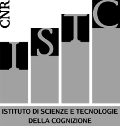In order to deepen our knowledge of the brains ability to react to a cerebral insult, it is fundamental to obtain a snapshot of the acute phase, both for understanding the neural condition immediately after the insult and as a starting point for follow-up and clinical outcome prognosis. The characteristics of the brains spontaneous neuronal activity in perirolandic cortical areas were investigated in 32 patients who had a stroke in the middle cerebral artery (MCA) territory of one hemisphere in the previous 10 days. Magnetic fields from both left and right rolandic areas were recorded at rest with open eyes. Total and band power properties, the individual alpha frequency (IAF) and the spectral entropy were analyzed and compared with a sex-age matched control group. In agreement with electroencephalographic literature, low frequency absolute powers were higher and high frequency were lower in the affected (AH) than in the unaffected hemisphere (UH), and also their values in both hemispheres differed from control values. An IAF reduction was found in AH with respect to UH. As new findings, the total power was higher in AH than in UH, after excluding 4 right damaged patients with cortico-subcortical lesions, who showed a completely disorganized spectral pattern. Spectral entropy was lower in AH than in UH. Clinical severity correlated with the AH decrease of gamma band power, IAF and spectral entropy. Larger lesions were associated to worse clinical pictures and MEG alterations. A lesion affecting the MCA territory of one hemisphere induces a perilesional increase of the low-frequency rhythms spectral power within the AH rolandic areas; the same effect was present also in the UH, indicating interhemispheric diaschisis. In the AH, results showed an increase of the total power and a reduction of the spectral entropy, suggesting a higher synchrony of local neuronal activity, a reduction of the intra-cortical inhibitory networks efficiency and an increase of neuronal excitability. Direct correlation linked gamma band activity preservation and less severe clinical status. Dependence of the clinical picture, and associated spectral alterations, on the lesion volume and not on the lesion level, suggests a diffuse neuronal impairment, rather than a selective structures damage, contributing to neurological status in the acute phase of stroke
Rhythmic brain activity at rest from rolandic areas in acute mono-hemispheric stroke: a magnetoencephalographic study.
Publication type:
Articolo
Publisher:
Academic Press,, Orlando, FL , Stati Uniti d'America
Source:
NeuroImage (Orlando Fla., Print) 28 (2005): 72–83.
info:cnr-pdr/source/autori:Tecchio F, Zappasodi F, Pasqualetti P, Tombini M, Salustri C, Oliviero A, Lupoi D, Pizzella V, Vernieri F, Rossini PM/titolo:Rhythmic brain activity at rest from rolandic areas in acute mono-hemispheric stroke: a magnetoencephal
Date:
2005
Resource Identifier:
http://www.cnr.it/prodotto/i/46751
Language:
Eng

